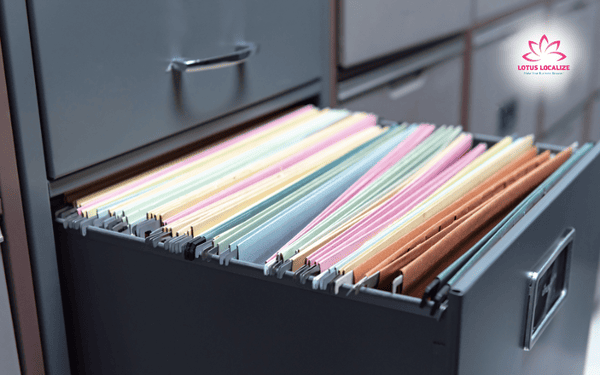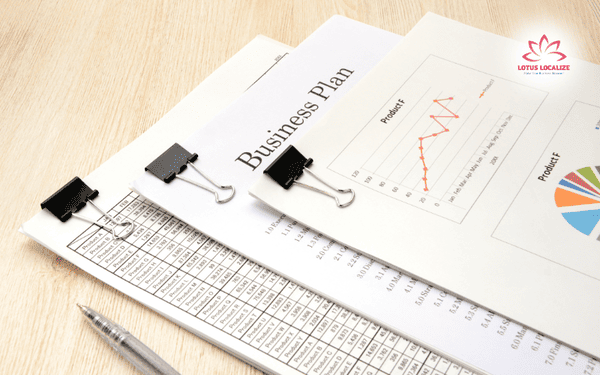
What is TEP? Explore how the TEP process enhances translation quality
In today’s globalized world, ensuring that your message resonates across languages is crucial. Whether it’s for business, legal matters, or marketing, accurate and culturally sensitive translations are essential. The TEP process—Translation, Editing, and Proofreading—provides a proven framework to guarantee high-quality translations.
At its core, the TEP process ensures that your translated content is precise, consistent, and polished, reflecting the true meaning of the original text. This approach is key to avoiding errors, maintaining professionalism, and delivering content that engages your target audience.
In this post, we’ll break down the TEP process and its vital role in ensuring translation excellence, explaining how each step contributes to the overall quality of the final product.
What is the TEP process? Understanding its role in translation quality
The TEP process stands for Translation, Editing, and Proofreading — a structured approach to ensure high-quality translations. This method is critical for maintaining consistency, accuracy, and cultural relevance across various types of content. The TEP process involves three distinct stages, each contributing to the refinement of the translation and helping deliver an error-free final product.

The first step, translation, is where the raw content is converted from the source language into the target language. This step is crucial because it’s the foundation upon which everything else is built. A skilled translator does not just focus on literal translation but also ensures that the message, tone, and nuances of the original text are conveyed accurately.
Once the translation is complete, it moves to the editing phase. During this stage, an editor carefully reviews the translation to ensure that the meaning is clear, the tone is appropriate, and the content flows smoothly. The editor also checks for consistency in terms, style, and format. This step ensures that the translated text is aligned with the original content and ready for the final proofreading.
The final step, proofreading, is when the translation undergoes a thorough review for any grammatical, spelling, or punctuation errors. Proofreaders ensure that the translation is polished and professional, meeting the highest standards. Each of these stages works together to create translations that are not only accurate but also culturally appropriate and linguistically natural.
Read more: 8 localization mistakes you must avoid for global success
Breaking down the TEP process: A step-by-step guide
The TEP process is a methodical approach designed to ensure that every aspect of the translation is thoroughly reviewed and refined. Let’s dive deeper into each of the three stages to better understand how they contribute to the final product.
- Translation: The translation phase is where the process begins. A professional translator is responsible for accurately converting the source text into the target language. This requires more than just direct word-for-word translation; the translator must account for idiomatic expressions, cultural references, and context to make the translation as meaningful as the original. The translator’s role is to interpret the original message and deliver it clearly and correctly in the target languages, while ensuring that it still resonates with the target audience.

- Editing: Once the translation is completed, it’s time for the editing phase. An editor reviews the text with a keen eye for detail. Editors focus on refining the translation, making sure the text reads naturally and that there are no awkward phrasing or inconsistencies in terms or tone. They also ensure that the translated content matches the style and format of the original, aligning it with the overall purpose of the document. At this stage, the editor ensures that the translation conveys the correct message in the best possible way.
- Proofreading: The final stage is proofreading, which involves a thorough check for errors in grammar, spelling, punctuation, and formatting. Proofreaders check for any typographical mistakes that may have been missed in the previous stages. This step is essential because it guarantees that the translation is polished and ready for final delivery. Proofreading ensures that the translated document meets the required professional standards and is free from any errors that could impact its quality or credibility.

Each of these stages is essential for maintaining the quality of the translation. By following the TEP process, businesses and organizations ensure that their translations are as accurate, consistent, and culturally appropriate as possible.
Read more: Pharma translation: Why it’s crucial in the global pharmaceutical industry
Why is the TEP process essential for translation quality?
The TEP process is essential because it ensures that the translated text is of the highest possible quality. Whether you are translating legal documents, marketing materials, or technical content, the TEP process guarantees several critical elements that improve the overall quality of the translation.
Because TEP process ensures accuracy and precision
Accuracy is the cornerstone of any translation, and the TEP process ensures that the translation reflects the meaning, tone, and intent of the original content. The translation phase focuses on converting the source text into the target language, while editing ensures that the content is clear and precise. The proofreading stage ensures that no errors slip through, making the final translation as accurate as possible.

Because TEP process maintains consistency across documents
The TEP process ensures consistency across all translated documents. This is particularly important when translating large volumes of text or materials that are part of a larger project. Whether it’s a series of technical manuals or multiple marketing materials, the TEP process helps maintain consistency in terminology, style, and tone. The editor’s role in checking for uniformity across the content and the use of tools like translation memory helps ensure that the same terminology is used consistently throughout the project.
Because TEP process ensure cultural sensitivity and relevance
Translation isn’t just about converting words; it’s about ensuring that the message resonates with the target audience. The TEP process ensures that the content is culturally appropriate and relevant to the target market. This is achieved through careful editing and the translator’s understanding of the cultural nuances of the target language. By adapting the content to the local culture, the translation feels natural and avoids any cultural missteps that could undermine its effectiveness.

Because TEP process delivers professionalism
The final step of the TEP process — proofreading — ensures that the translation is polished and professional. A translation that is free from errors and inconsistencies conveys a sense of professionalism and attention to detail. This is particularly important for businesses and organizations that rely on translations to communicate with clients, customers, or partners. The TEP process ensures that the translation is of the highest quality, helping to build trust and credibility.
When is it appropriate to implement the TEP process?
The TEP process is not just for any translation; it is particularly useful in situations where the stakes are high, and the need for precision, accuracy, and cultural sensitivity is critical. Here are several scenarios when the TEP process should be employed:
- Legal translations: When translating legal documents, accuracy is paramount. Legal documents often contain specialized terminology, and even a small error could have serious consequences. The TEP process ensures that every detail is accurate and that the translation is legally sound. By going through the TEP stages, legal translators can ensure that complex legal terms are appropriately conveyed and that the document’s meaning is not lost.

- Technical and scientific translations: For technical or scientific documents, such as patents, manuals, and research papers, the TEP process ensures that technical terms are translated correctly and that the information is presented clearly. Inaccurate translations in these fields could lead to product malfunctions, safety hazards, or scientific misunderstandings. The TEP process helps to prevent these risks by ensuring that the translation is precise and adheres to industry-specific standards.
- Marketing and advertising: When translating marketing materials (marketing translation), the TEP process ensures that the tone and message resonate with the target audience. A direct translation may not be enough; the translation must also be culturally adapted to appeal to local preferences and sensibilities. The TEP process ensures that marketing materials are not only accurate but also engaging and relevant to the local market.

- Multilingual projects: For businesses operating internationally, translating content into multiple languages requires careful coordination. The TEP process ensures that all language versions of a document are consistent in terms of tone, terminology, and style. Whether you’re launching a global marketing campaign or translating a series of product manuals, the TEP process helps ensure that all translations convey the same message and maintain a consistent brand voice.
How to apply the TEP process for maximum efficiency
Implementing the TEP process effectively is key to achieving high-quality translations efficiently. Here are some practical tips to maximize the effectiveness of the TEP process:
- Collaborate with experienced professionals: The TEP process requires skilled professionals in each phase. Make sure to work with translators, editors, and proofreaders who have not only strong language skills but also expertise in the subject matter. For example, technical documents should be handled by translators who specialize in technical content, ensuring that the translation is both accurate and clear.
- Use translation memory tools: Translation memory (TM) tools are a great asset in improving efficiency. These tools store previously translated content, allowing translators to reuse segments of text across multiple projects. By using TM tools, translators can save time and maintain consistency, especially for long-term projects or documents with recurring terminology.

- Ensure clear communication among team members: Communication is vital to the success of the TEP process. Ensure that translators, editors, and proofreaders work closely together to address any issues promptly. Using collaborative platforms can help streamline the workflow and ensure everyone is on the same page, reducing the risk of mistakes or misunderstandings.
- Test and review the final translation: Before finalizing the translation, it’s important to test it. Have a native speaker or subject matter expert review the translation to check for natural flow, tone, and cultural appropriateness. This ensures that the final product is both linguistically correct and culturally resonant.
By following these best practices, you can apply the TEP process efficiently and ensure that your translations meet the highest standards of quality.
All in all, high-quality translation is essential for businesses aiming to expand and connect with international audiences. The TEP process — Translation, Editing, and Proofreading — ensures that every translation meets the highest standards of accuracy, consistency, and cultural relevance. By implementing a thorough TEP approach, you can guarantee that your translated content is not only linguistically accurate but also tailored to the needs and expectations of your target audience.
At Lotus Localize, we understand the importance of delivering translations that are precise, consistent, and culturally appropriate. Our team of professional translators, editors, and proofreaders work seamlessly together to ensure that your content resonates with your global audience while maintaining the integrity of your original message. Whether you need translation for legal documents, marketing materials, or technical manuals, we are equipped to handle projects of any size with efficiency and expertise.
Ready to elevate your global communication? Reach out to Lotus Localize today for a consultation, and let us help you achieve flawless translations with the TEP process.
Lotus Localize offers professional translation services: book translation service, document translation service, localization services, interpreting services ,… ensuring your message resonates—whether in writing or speech. Let us help you bridge linguistic gaps and connect with audiences worldwide.
Contact us today at our hotline or Whatsapp: + 84 866 224 968 or visit the websites: dichthuathoasen.com/en/. Let Lotus Localize accompany you in bringing products, people, and culture to the global stage, and together, we’ll create miracles!
QUALITY PROMISE
At Lotus Localize, we are dedicated to delivering high-quality services and ensuring the utmost satisfaction in every client project. Our team of translators and staff consistently exert effort and adhere rigorously to quality management procedures. This commitment guarantees that each project progresses seamlessly, meets deadlines, and exceeds our clients' expectations.












